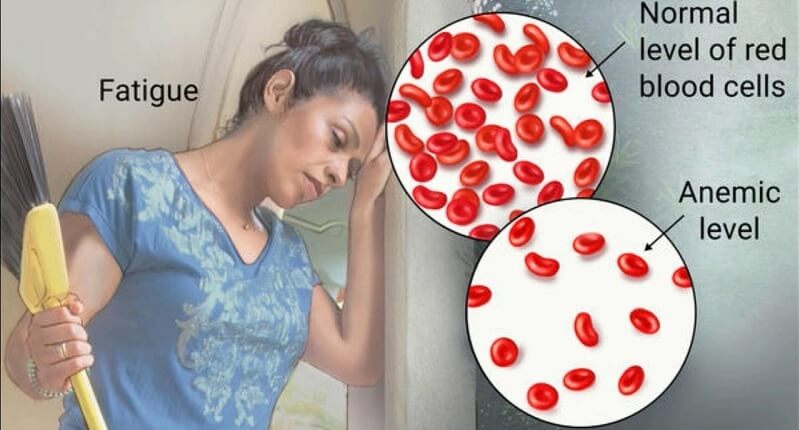


Anemia is a condition that develops when your blood lacks enough healthy red blood cells or hemoglobin. Hemoglobin is the main part of red blood cells and binds oxygen. If you have too few or abnormal red blood cells, or your hemoglobin is abnormal or low, the cells in your body will not get enough oxygen. Symptoms of anemia -- like fatigue -- occur because organs aren't getting what they need to function properly.
Anemia is the most common blood condition in the U.S. It affects about 3.5 million Americans. Women, young children, and people with chronic diseases are at increased risk of anemia. Important factors to remember are:
Certain forms of anemia are hereditary and infants may be affected by the time of birth.
Women in the childbearing years are particularly susceptible to iron-deficiency anemia because of the blood loss from menstruation and the increased blood supply demands during pregnancy.
Older adults also may have a greater risk of developing anemia because of poor diet and other medical conditions.
There are many types of anemia. All are very different in their causes and treatments. Iron-deficiency anemia, the most common type, is very treatable with diet changes and iron supplements. Some forms of anemia -- like the mild anemia that develops during pregnancy -- are even considered normal. However, some types of anemia may present lifelong health problems.
There are more than 400 types of anemia, which are divided into three groups:
Red blood cells can be lost through bleeding, which often can occur slowly over a long period of time, and can go undetected. This kind of chronic bleeding commonly results from the following:
With this type of anemia, the body may produce too few blood cells or the blood cells may not function correctly. In either case, anemia can result. Red blood cells may be faulty or decreased due to abnormal red blood cells or a lack of minerals and vitamins needed for red blood cells to work properly. Conditions associated with these causes of anemia include the following:
Sickle cell anemia is an inherited disorder that, in the U.S. affects mainly African-Americans and Hispanic Americans. Red blood cells become crescent-shaped because of a genetic defect. They break down rapidly, so oxygen does not get to the body's organs, causing anemia. The crescent-shaped red blood cells can also get stuck in tiny blood vessels, causing pain.
Iron-deficiency anemia occurs because of a lack of the mineral iron in the body. Bone marrow in the center of the bone needs iron to make hemoglobin, the part of the red blood cell that transports oxygen to the body's organs. Without adequate iron, the body cannot produce enough hemoglobin for red blood cells. The result is iron-deficiency anemia. This type of anemia can be caused by:
Vitamin-deficiency anemia may occur when vitamin B12 and folate are deficient. These two vitamins are needed to make red blood cells. Conditions leading to anemia caused by vitamin deficiency include:
During early pregnancy, sufficient folic acid can help prevent the fetus from developing neural tube defects such as spina bifida.
Bone marrow and stem cell problems may prevent the body from producing enough red blood cells. Some of the stem cells found in bone marrow develop into red blood cells. If stem cells are too few, defective, or replaced by other cells such as metastatic cancer cells, anemia may result. Anemia resulting from bone marrow or stem cell problems include:
Anemia associated with other conditions usually occurs when there are too few hormones necessary for red blood cell production. Conditions causing this type of anemia includes the following:
When red blood cells are fragile and cannot withstand the routine stress of the circulatory system, they may rupture prematurely, causing hemolytic anemia. Hemolytic anemia can be present at birth or develop later. Sometimes there is no known cause. Known causes of hemolytic anemia may include: